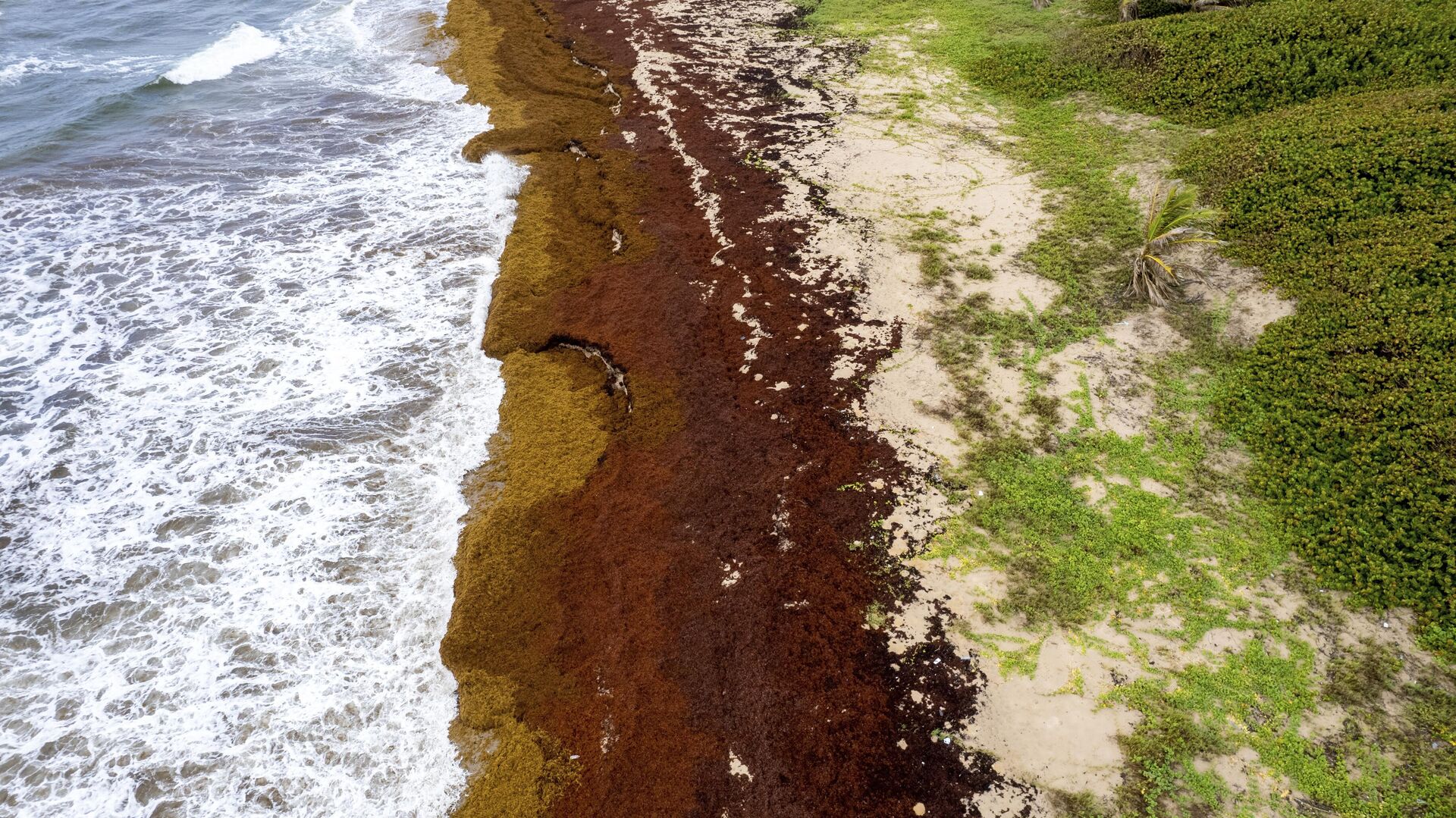https://sputnikglobe.com/20230602/flesh-eating-bacteria-found-in-sargassum-bloom-on-florida-beaches-1110851073.html
Flesh-Eating Bacteria Found in Sargassum Bloom on Florida Beaches
Flesh-Eating Bacteria Found in Sargassum Bloom on Florida Beaches
Sputnik International
The bacteria was detected in the massive sargassum belt that is hitting Florida shores. The bacteria can lead to amputation and death in severe cases.
2023-06-02T02:54+0000
2023-06-02T02:54+0000
2023-06-02T02:49+0000
florida
florida
americas
seaweed
public health
cdc
cdc
us centers for disease control (cdc)
https://cdn1.img.sputnikglobe.com/img/07e7/05/02/1110019856_3:0:3644:2048_1920x0_80_0_0_bba4f766078b3300f1f74baec0dcd4e9.jpg
Beachgoers in Florida have a new concern to be wary of this summer: researchers have warned that the massive belt of Sargassum seaweed piling up on beaches may become a “perfect pathogen storm” if it becomes overrun with Vibrio bacteria.A study conducted by the Florida Atlantic University (FAU) revealed that Vibrio can cling to plastic waste which is carried ashore by a 5,000-mile wide belt of seaweed known as the “Great Atlantic Sargassum Belt” that is smacking into Florida’s coastline.The majority of the seaweed belt is expected to wash up between June and July.If a person ingests, or exposes an open wound to the bacteria, an infection can lead to amputation or death, in severe cases.“In particular, caution should be exercised regarding the harvest and processing of Sargassum biomass until the risks are explored more thoroughly.”Mincer noted in the findings that officials came upon an "interesting" discovery of "zot" genes that effectively cause "leaky gut syndrome."“For instance, if a fish eats a piece of plastic and gets infected by this Vibrio, which then results in a leaky gut and diarrhea, it’s going to release waste nutrients such as nitrogen and phosphate that could stimulate Sargassum growth and other surrounding organisms.”
florida
americas
Sputnik International
feedback@sputniknews.com
+74956456601
MIA „Rossiya Segodnya“
2023
News
en_EN
Sputnik International
feedback@sputniknews.com
+74956456601
MIA „Rossiya Segodnya“
Sputnik International
feedback@sputniknews.com
+74956456601
MIA „Rossiya Segodnya“
sargassum, seaweed, florida seaweed, cdc, flesh eating bacteria, vibrio bacteria, great atlantic sargassum belt
sargassum, seaweed, florida seaweed, cdc, flesh eating bacteria, vibrio bacteria, great atlantic sargassum belt
Flesh-Eating Bacteria Found in Sargassum Bloom on Florida Beaches
Vibrio bacteria, according to the US Centers for Disease Control and Prevention (CDC), causes about 80,000 illnesses and 100 deaths in the US per year, and is most often transferred when people eat raw or undercooked seafood, or expose an open wound to seawater.
Beachgoers in Florida have a new concern to be wary of this summer: researchers have warned that the massive belt of Sargassum seaweed piling up on beaches may become
a “perfect pathogen storm” if it becomes overrun with Vibrio bacteria.
A study conducted by the Florida Atlantic University (FAU) revealed that Vibrio can cling to plastic waste which is carried ashore by a 5,000-mile wide belt of seaweed known as the “Great Atlantic Sargassum Belt” that is smacking into Florida’s coastline.
The majority of the seaweed belt is expected to wash up between June and July.
If a person ingests, or exposes an open wound to the bacteria, an infection can lead to amputation or death, in severe cases.
“We really want to make the public aware of these associated risks,” said Dr. Tracy Mincer, a corresponding lead author of the study, and an assistant professor of biology at FAU’s Harbor Branch Oceanographic Institute and Harriet L. Wilkes Honors College.
“In particular, caution should be exercised regarding the harvest and processing of Sargassum biomass until the risks are explored more thoroughly.”
Mincer noted in the findings that officials came upon an "interesting" discovery of "zot" genes that effectively cause "leaky gut syndrome."
“For instance, if a fish eats a piece of plastic and gets infected by this Vibrio, which then results in a leaky gut and diarrhea, it’s going to release waste nutrients such as nitrogen and phosphate that could stimulate Sargassum growth and other surrounding organisms.”
According to the Florida Department of Health, there were 74 confirmed cases of Vibrio infections in 2022 and 17 deaths caused by the infection in that same year, compared to 34 cases and 10 deaths in 2021.
The department made a note that this “abnormal increase” was due to the impacts of Hurricane Ian.


